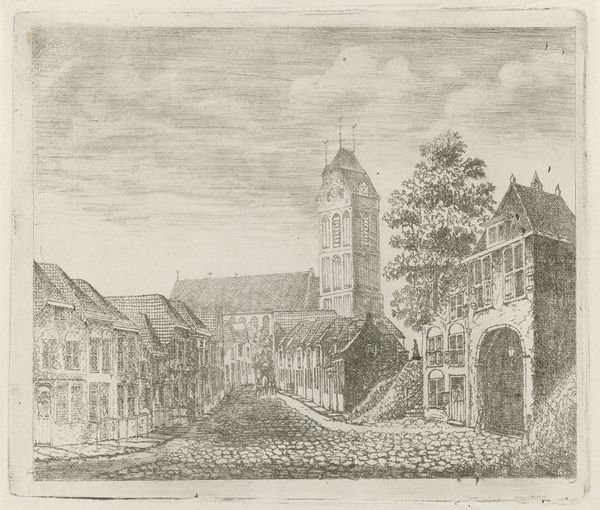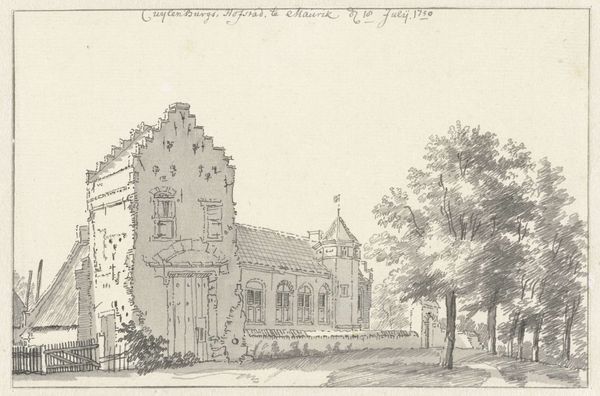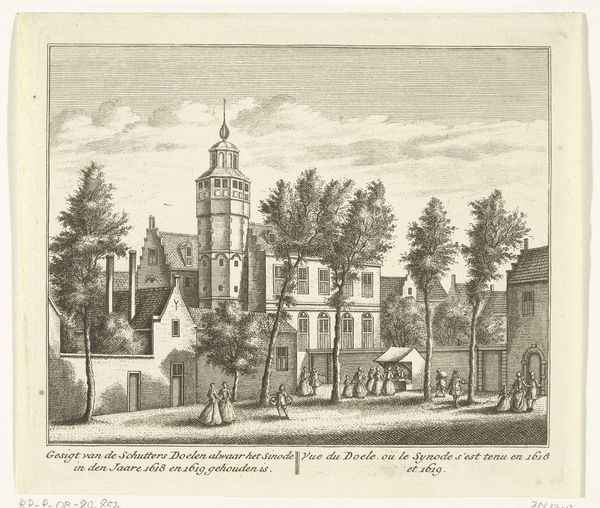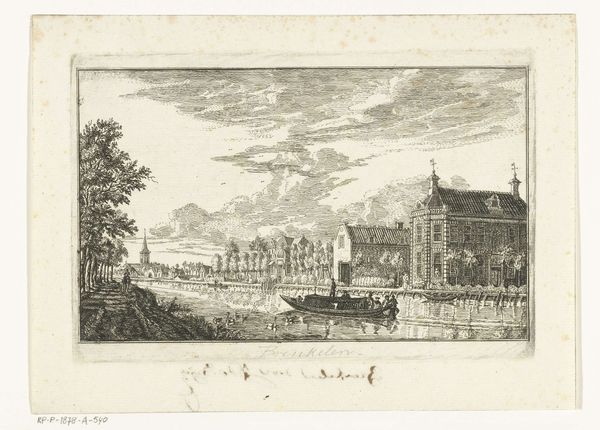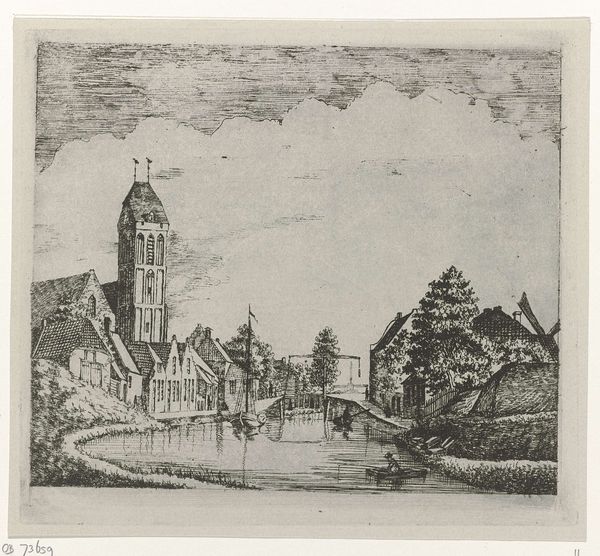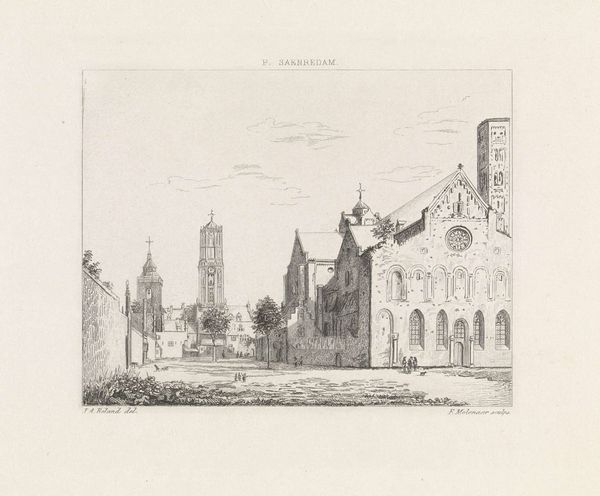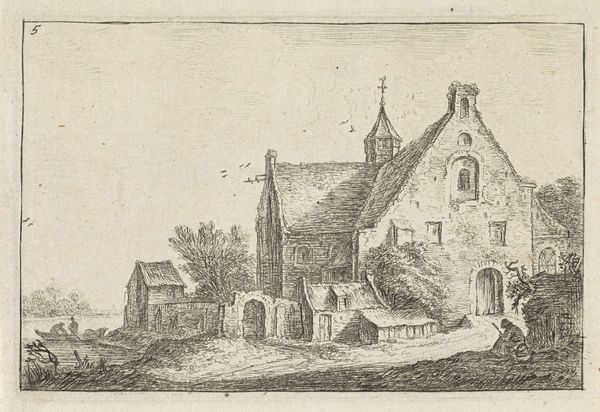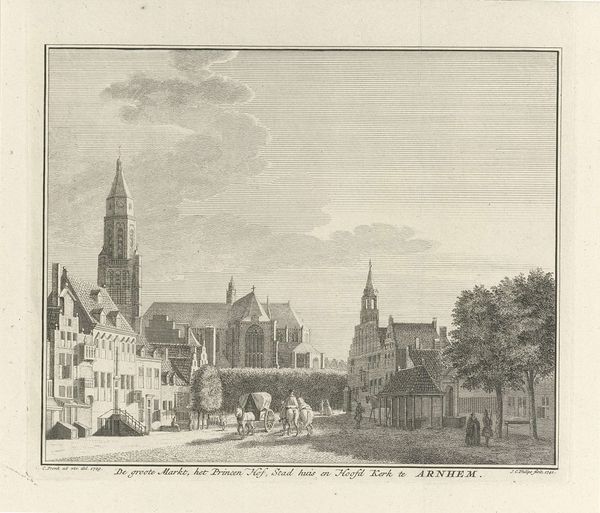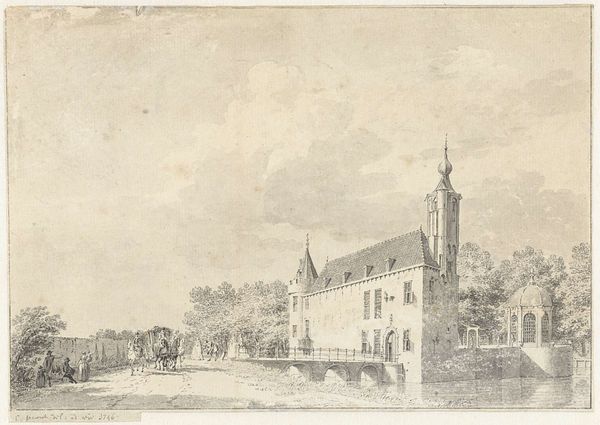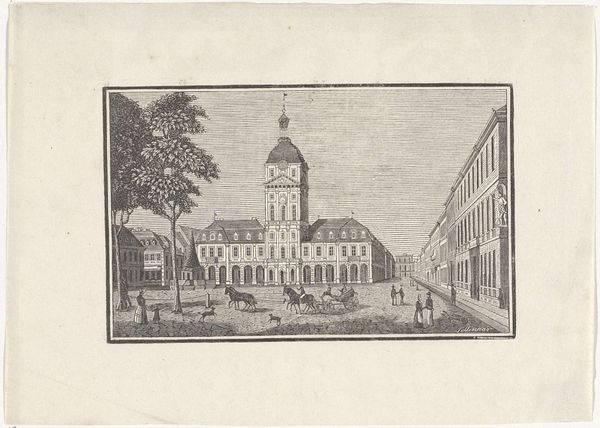
drawing, print, etching
#
drawing
#
16_19th-century
# print
#
etching
#
landscape
#
etching
#
cityscape
#
realism
Dimensions: height 137 mm, width 159 mm
Copyright: Rijks Museum: Open Domain
Curator: Here we have Eberhard Cornelis Rahms' "Broekerpoort te Oudewater," an etching, dating from between 1860 and 1868. Editor: My first thought is how the stark monochrome really emphasises the townscape, doesn't it? There's something almost dreamlike about the precision. Curator: It's a meticulously crafted image. Rahms chose to depict Oudewater, likely for its historical resonance during that period, since the Broekerpoort symbolizes the town's defenses and independence. Think about how cities valued these kinds of public symbols of freedom, especially in the 19th century. Editor: The Broekerpoort certainly has presence; the gate as an entry is an archetypal symbol found across cultures representing both physical passage and transition from one state to another. Even today we react strongly to thresholds and boundaries. Curator: Precisely, and Oudewater held strategic importance. So visually representing the Broekerpoort became a claim of civic identity in a rapidly changing Netherlands. It projects stability amid industrial transformation. Editor: It does. The very stone is suggestive of permanence. The steeple looming over the scene and town might be a reference to civic pride, the importance of religion in this region at the time, or even guidance or protection. The way the artist includes smaller details – the figures, trees, individual stones in the street – amplifies that reading. Curator: The interesting detail of the steeple draws the eye further. Realism was gaining prominence, aiming for a detailed representation of urban life, like this depiction. Editor: An evocative composition – I am particularly drawn to the gateway itself, its significance as both a boundary and passage. A great way to gain some insight into nineteenth century life. Curator: Yes, and thinking about Rahms' background and print production methods, it gives context to how these images reached a wide audience beyond the immediate town, shaping perceptions. Editor: Seeing the blending of social commentary with symbolic expression here makes me want to see more of Rahms’s work and really think about how those doorways feature across Dutch iconography.
Comments
No comments
Be the first to comment and join the conversation on the ultimate creative platform.
